The first Seat Ibiza left the production line on 27 April 1984, just over 30 years ago. It was the Spanish car maker’s attempt to stand on its own feet after splitting from its near three-decade long technological reliance on Fiat in 1982.
To celebrate the occasion, last week Seat rolled out its fleet of historic road and track Ibiza models at the historic, very short-lived (and thoroughly derelict) Autódromo de Sitges-Terramar. The line-up included the very first Ibiza off the line, a car so precious to Seat we were not allowed to drive it.
The Ibiza was born two years after Volkswagen moved in on Seat, initially getting the company to build the contemporary Volkswagen Passat and Volkswagen Polo models at its factories.
Seat’s engineers created the Ibiza hatchback (and the related Malaga saloon) on the floorpan of the Fiat Strada, which the company had been building when it split from its Fiat partnership.
The super-crisp lines were drawn up by ItalDesign and the design industrialised by German coachbuilder Karmann. Porsche’s Engineering arm developed the head for the 1.5-litre engine and Seat was willing to pay a small licence fee on each car to be allowed to have the ‘System Porsche’ script on the cam cover.
The Seat brand arrived on the Ibiza in the UK in 1985, just before Volkswagen finally took a controlling stake in the company. The first Ibiza was pretty successful over its nine-year life, shifting more than 1.3 million units. Poking around, though, it contains a few entertaining quirks.
Most unexpected is the original interior design, which is Citroën-esque in its execution. The indicators are operated by a rocker switch and the headlight switches are also mounted on the steering column (later dropped as part of a facelift). The extremely generous and over-stuffed front seats are a reminder of an era before ‘dynamics’ ruled the automotive world.
Under the bonnet – noting the chassis number – the engine is mounted right in the nose of the car, with the manifold close to the radiator. The four-pot is inclined forwards and is well ahead of the axle line. Indeed, there’s enough room to squeeze in a full-size spare wheel, although it’s extremely close to the wiper mechanism.
The Ibiza was much bigger than contemporary superminis and even spacious by today’s standards. Of course the thin pillars and huge glass make the cabin remarkable and the view out is not unlike sitting on the top deck of a bus.
The Seat team wasn’t going to let us drive ‘old number one’, but they had laid on range of sporting Ibizas from the brand’s own collection and allowed us to make a few laps of the old circuit, which included two 60 degree bankings.
Mk1 Seat Ibiza SXi
Seat’s first hot Ibiza appeared in 1988, powered by a 100bhp injection version of the System Porsche 1.5-litre engine. Weighing well under a tonne and with a torquey, pre-cat, eight valve engine, the SXi has a respectable amount of mid-range pull.
However, this is not a sporting car in any way. The steering is incredibly slow, seemingly needing arm fulls of lock for a relatively small change in direction. The long, spindly, gear lever also requires a very long throw. Nothing about the SXi is quick or snappy, though it does have a pleasant gait and a wonderful airiness.
MK2 Seat Ibiza 2.0GT
Launched in 1993, the second-generation Ibiza was based on a VW platform, in this case a heavily modified version of the Mk2 Golf. The Ibiza was sister car to the 1993 Polo with one big difference: the Ibiza’s nose could accommodate the big 2.0-litre engine also used in the Mk3 Golf GTi.
I was looking forward to driving this, because I remember driving them new and they were one of my favourite cars of the era. Unfortunately, this 330-mile example was a disappointment.
The driving position (on the fat bolstered seats) seemed way too high and the car, which I remembered as punchy and lithe, felt rather stodgy and unresponsive. It all rather felt like I was driving with handbrake engaged. I still love the styling, though.
MK2.5 Seat Ibiza Cupra R
By the time the Mk2 Ibiza was given a comprehensive overhaul, Seat’s sporting intent had been upped a few notches. After introducing the Cupra brand, Seat brought in the Cupra R. Launched in 2000, it was a more powerful machine with bespoke suspension and big Brembo brakes.
Straight away, this feels much more modern than its predecessor. The seating position is much more purposeful and the 178bhp 1.8-litre turbocharged engine is very tractable and punchy. Driving around the broken race circuit quickly revealed just how well tuned the damping is on this car. A potential classic, especially as just 2000 were made.
MK3 Ibiza Cupra Diesel
The first Seat designed by Walter de’Silva, the Mk3 rode on a new platform and a diesel version of the Cupra arrived in 2002. This car reflects the excitement around the new common-rail diesel engines that were flooding onto the market. The combination of real-world economy and thumping mid-range performance (the torque output was 244lb ft at just 1900rpm) was first for car industry.
Even though there are just 100 miles on the clock, this car had huge pull and, again, the Cupra damping proved very impressive on this extremely poor surface. Unsurprisingly, this felt the most modern of all the classic Ibizas.
Mk4 Ibiza FR
The latest Ibiza was represented at the track by the 1.4-litre FR model, the Cupra designation seemingly now reserved for the Seat Leon range. Underlying the aggressively edgy body (by Luc Donckerwolke) is a shape that neatly recalls the Mk2 Ibiza.
It well reflects the ‘greening’ of the car industry. Instead of large-capacity engine, it uses a 1.4-litre unit with a turbo and supercharger. The transmission is a seven-speed double clutch unit. It has an impressive wall of torque and is satisfyingly nippy. Again, the damping is very impressive but the driving position and seats are a huge step over the older cars.
But yes, it is rather blander than its predecessors. Whether that’s just that because it is much superior ergonomically, because the engine is seamlessly strong and smooth and that the ‘box can shifter quick than any human, it’s hard to say. It’s a superior end product, but with the eccentricities polished out.

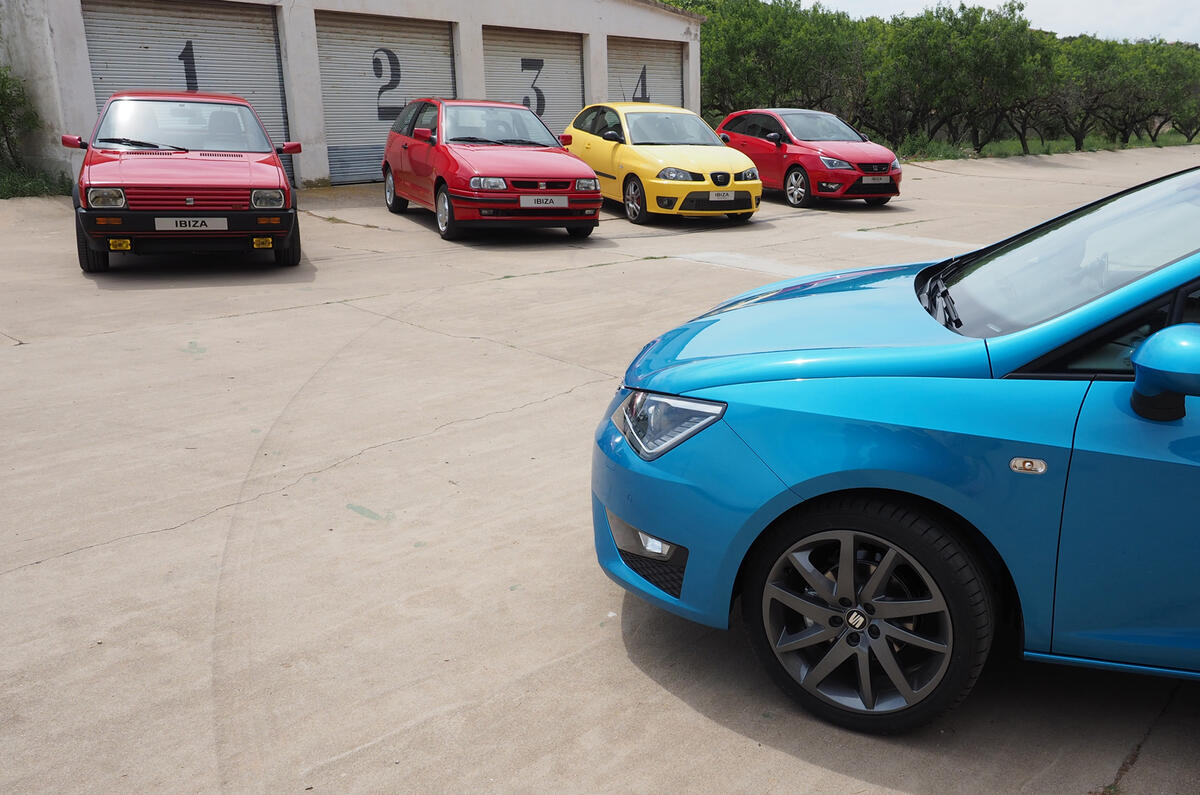
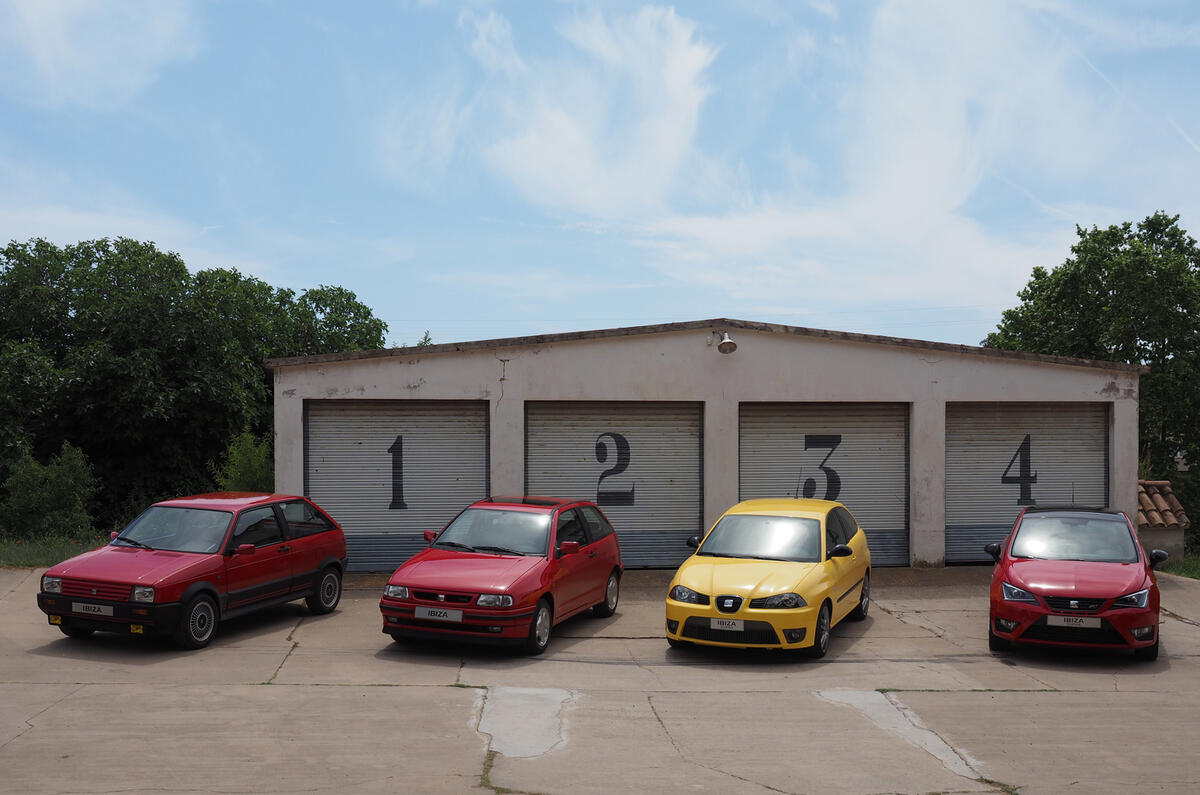
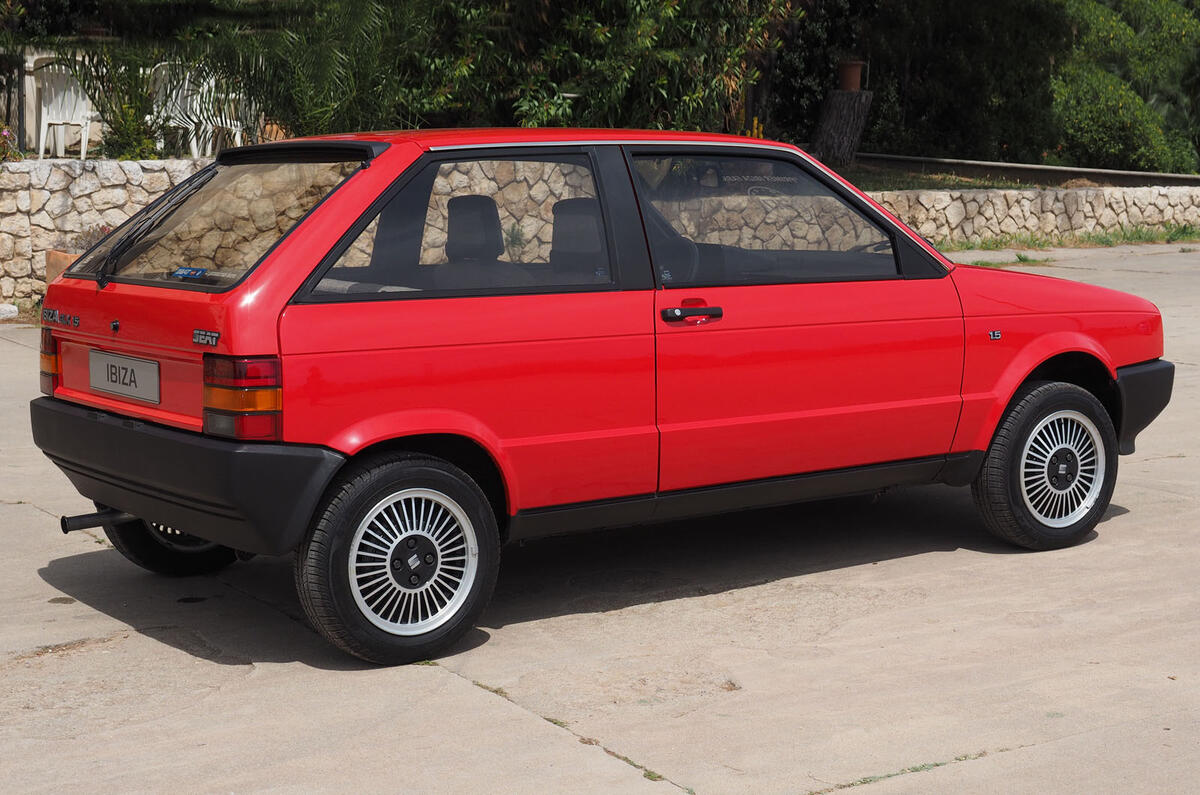
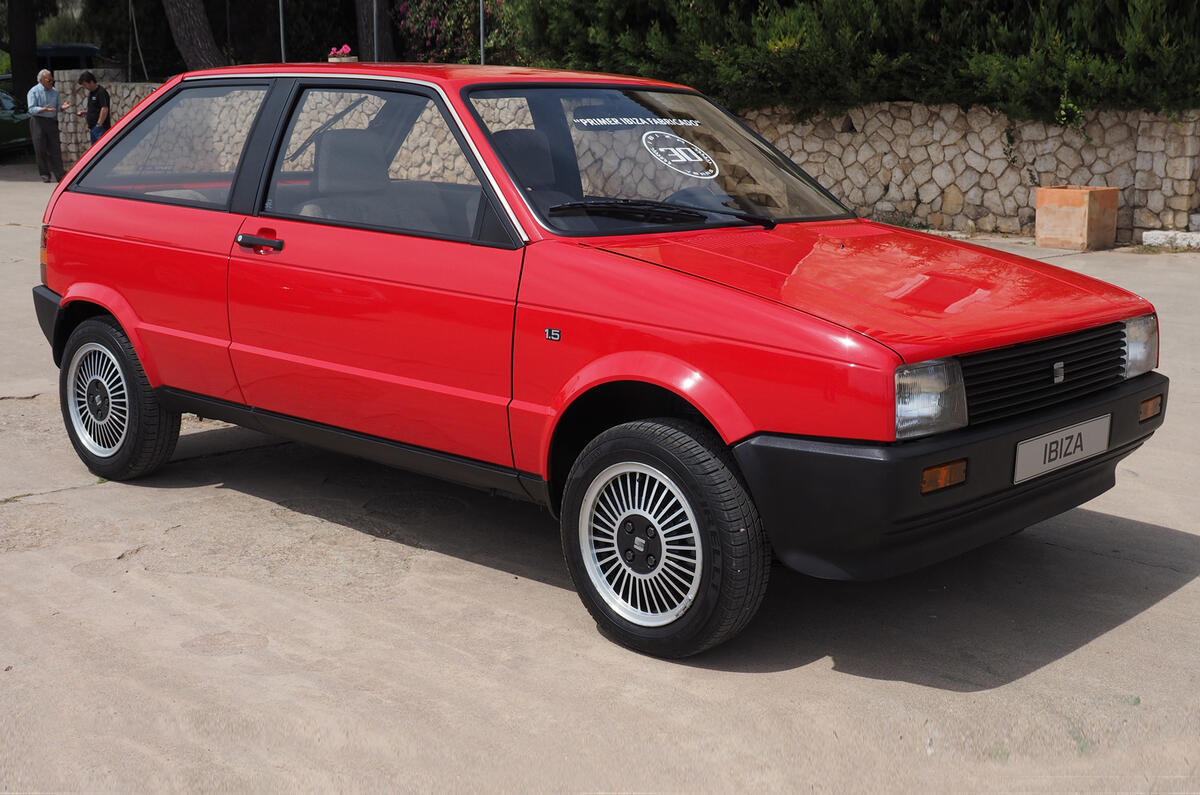
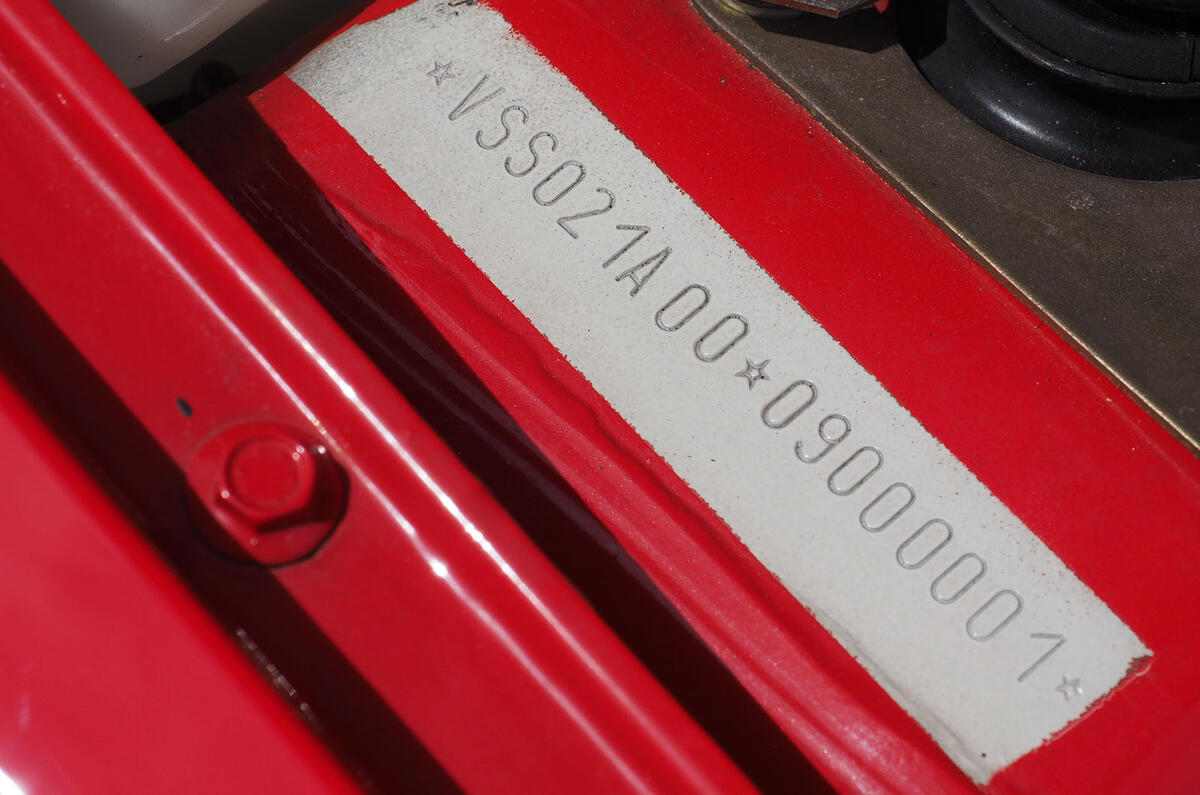
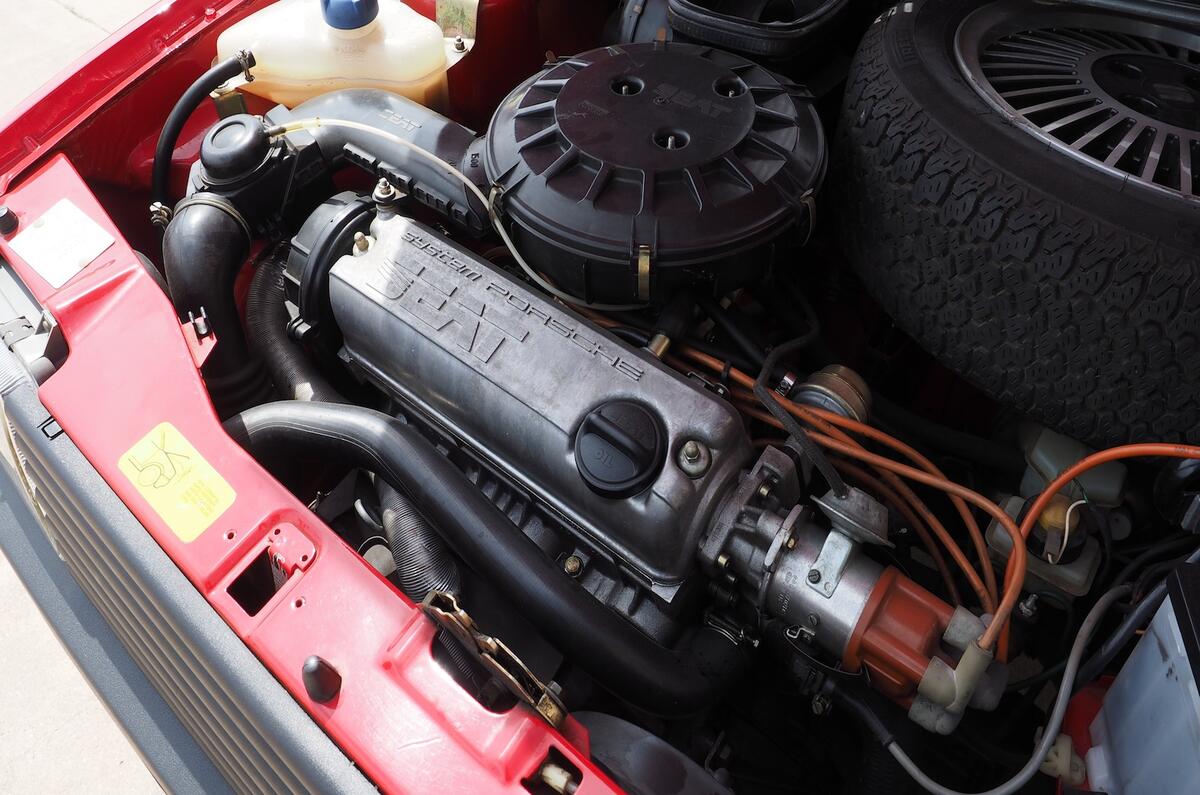
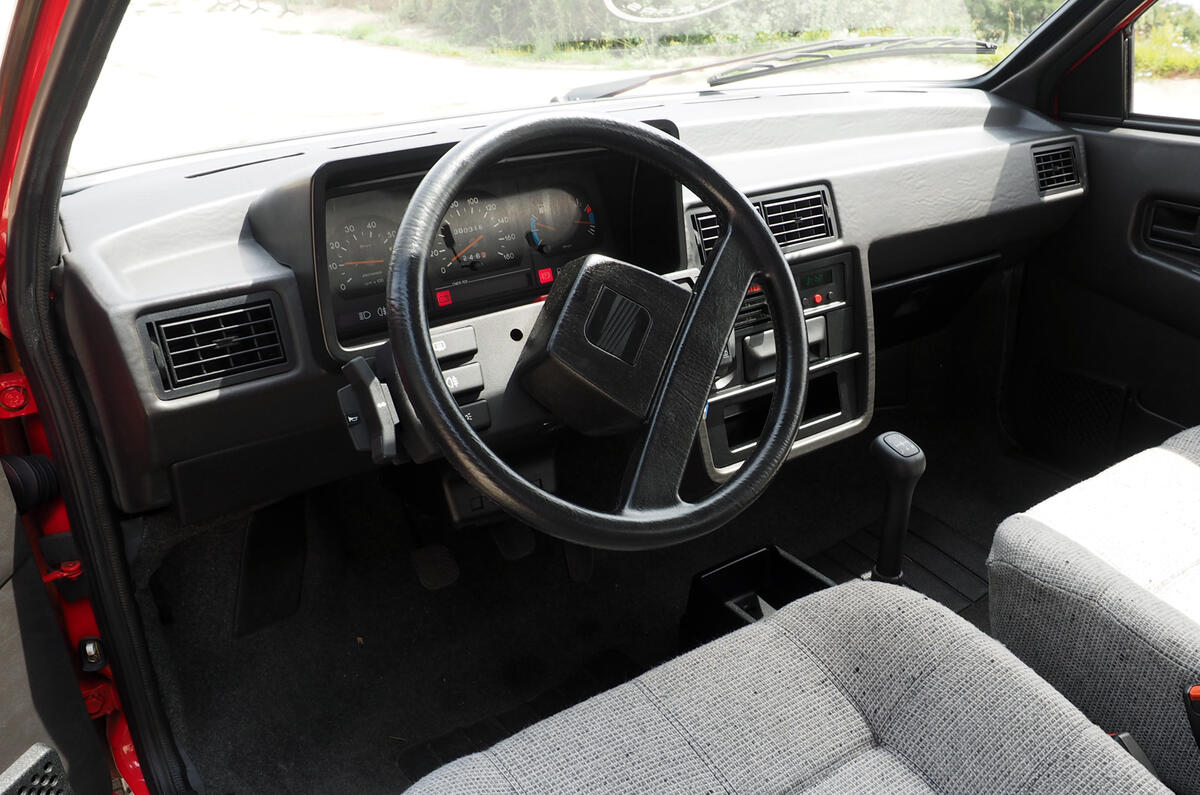
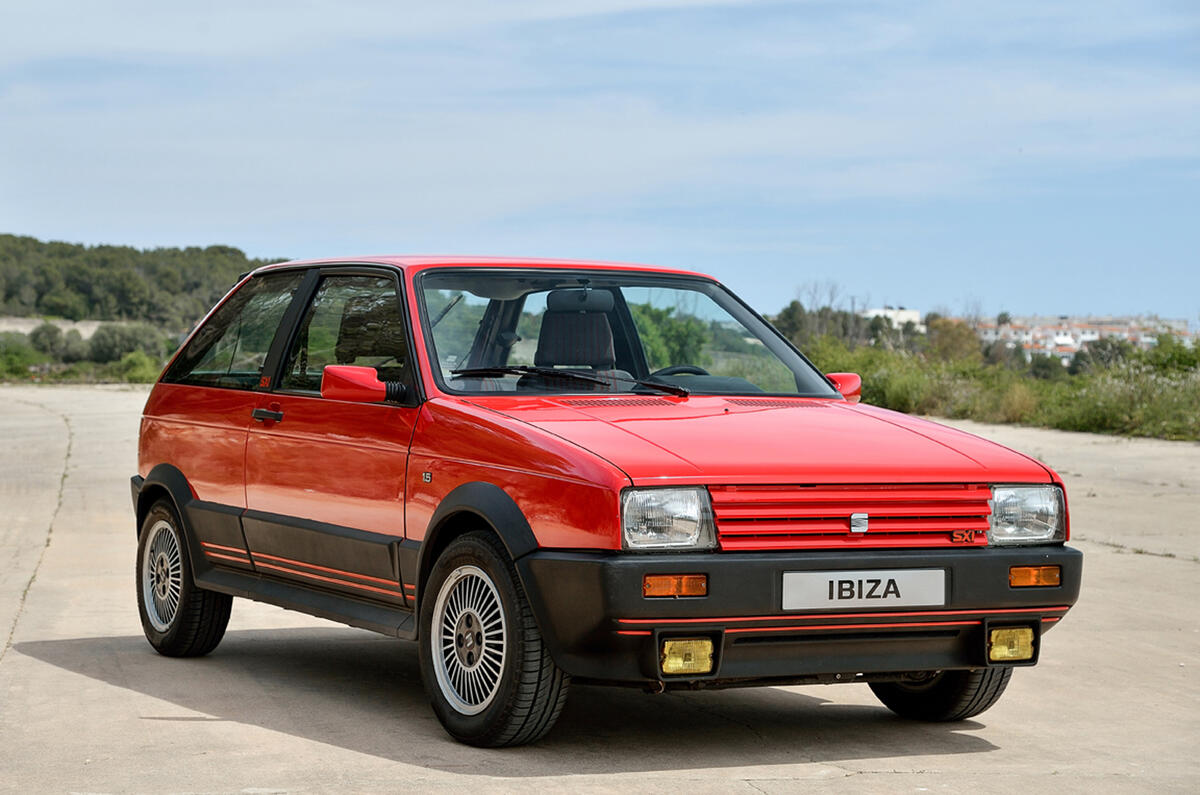
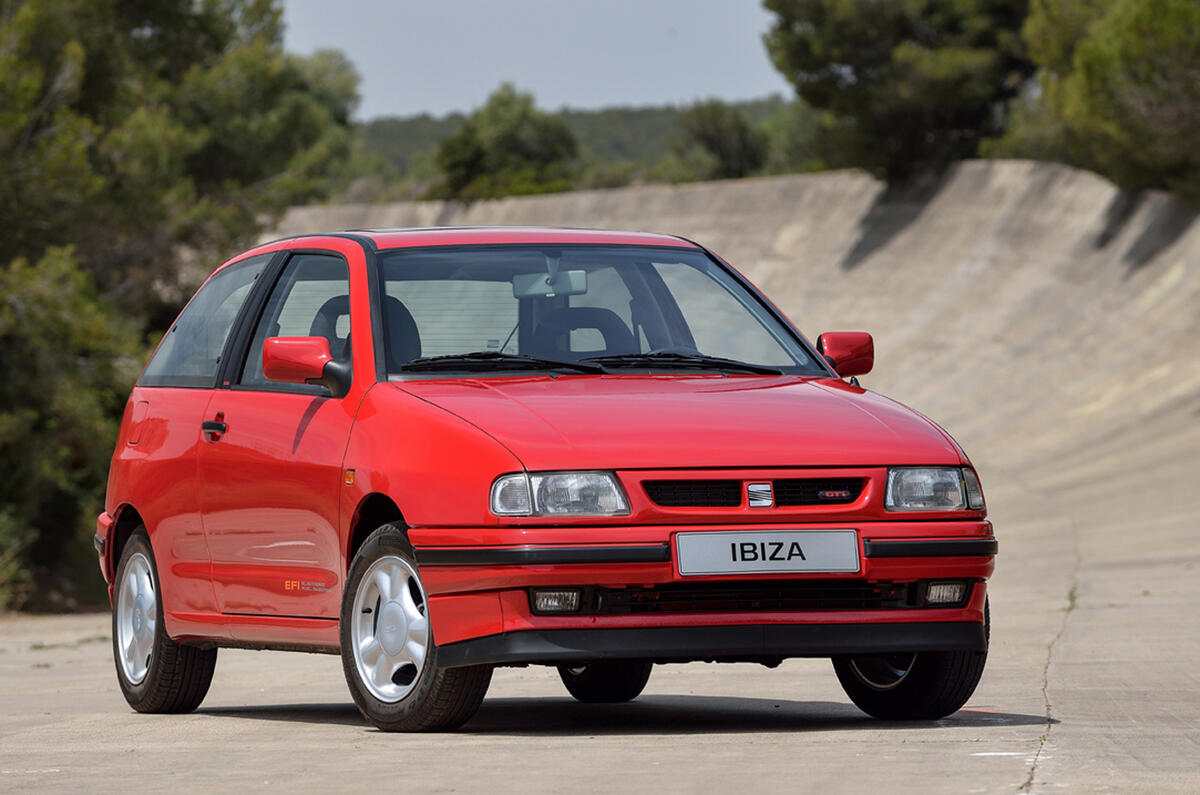
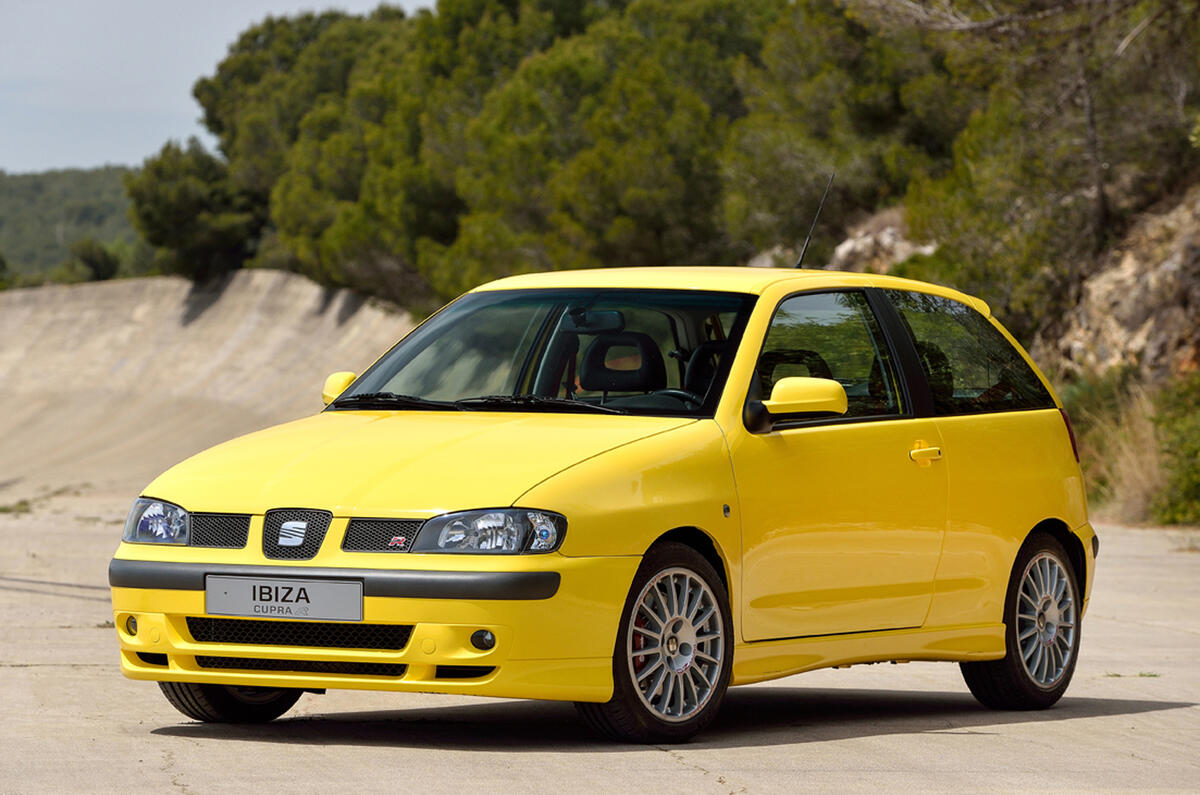
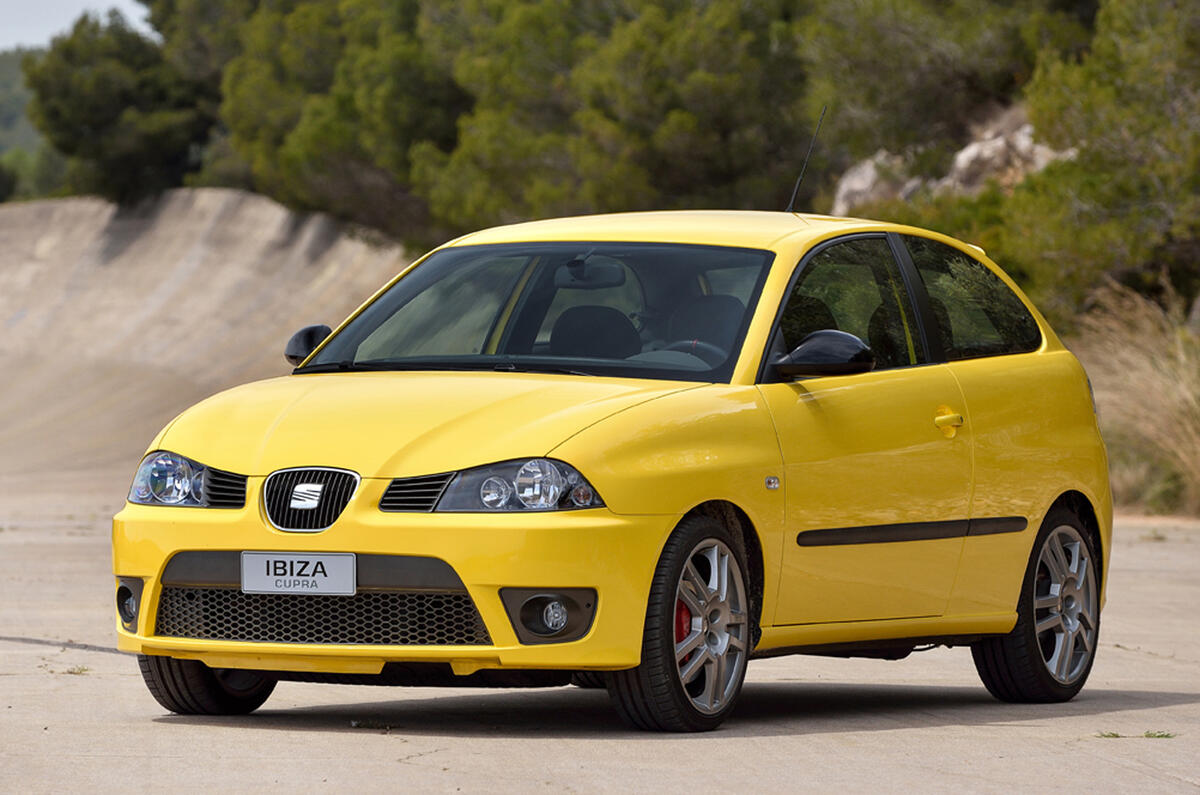
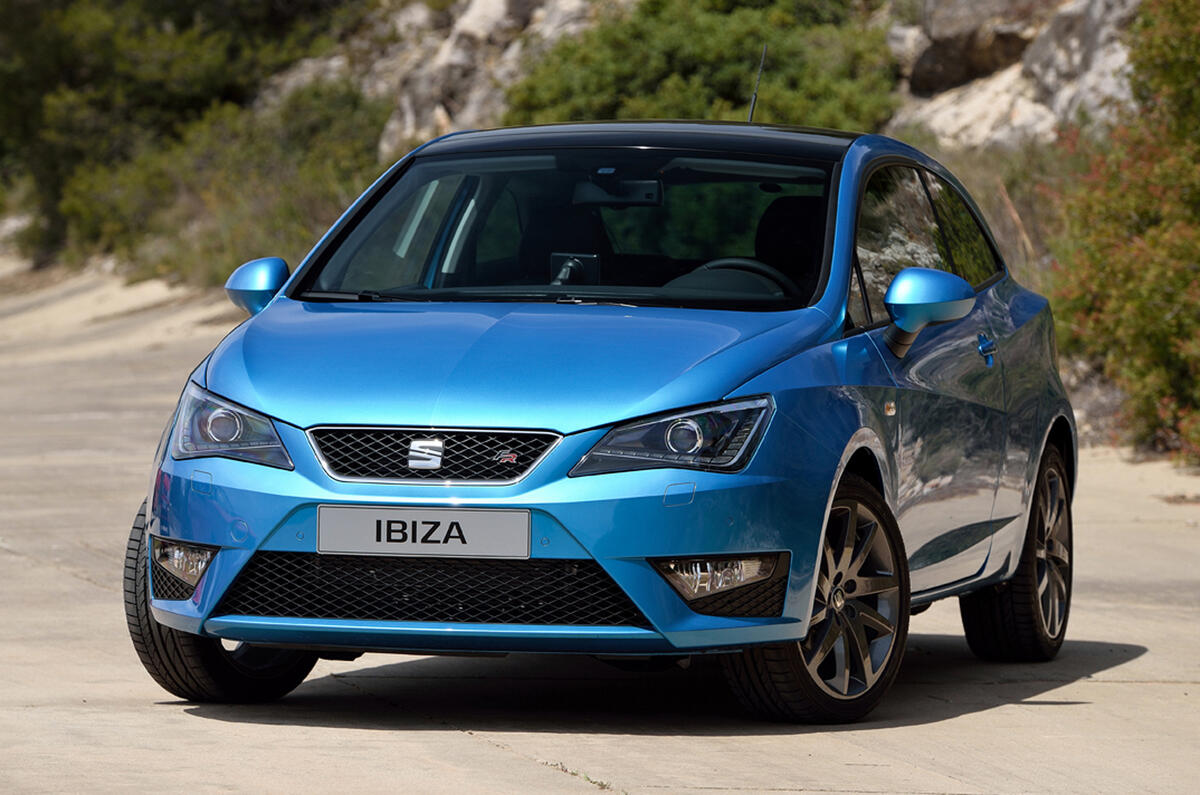


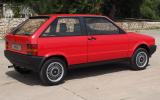
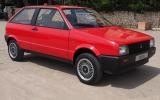
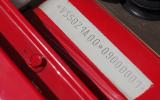
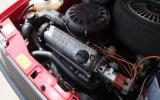


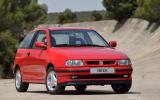
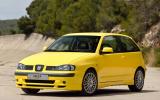
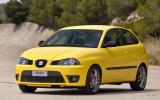



Join the debate
Add your comment
The 2nd gen was a really
Happy with my 2011 model though!
"...a diesel version of the
Mk 1
The new car smell was reminiscent of sweat and the clutch cables used to "grind" after a couple of thousand miles.
It was always a hard sell to convince people that the dash controls were "ahead of their time", ahem.
Still quite a good looking car today in a MK1 Golf type way.